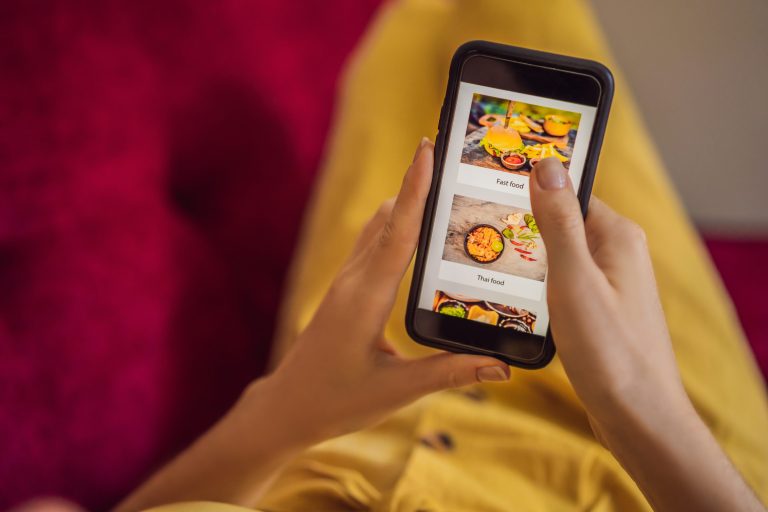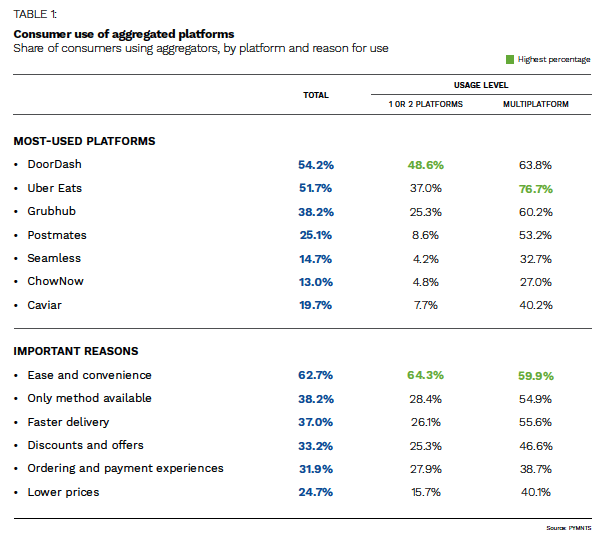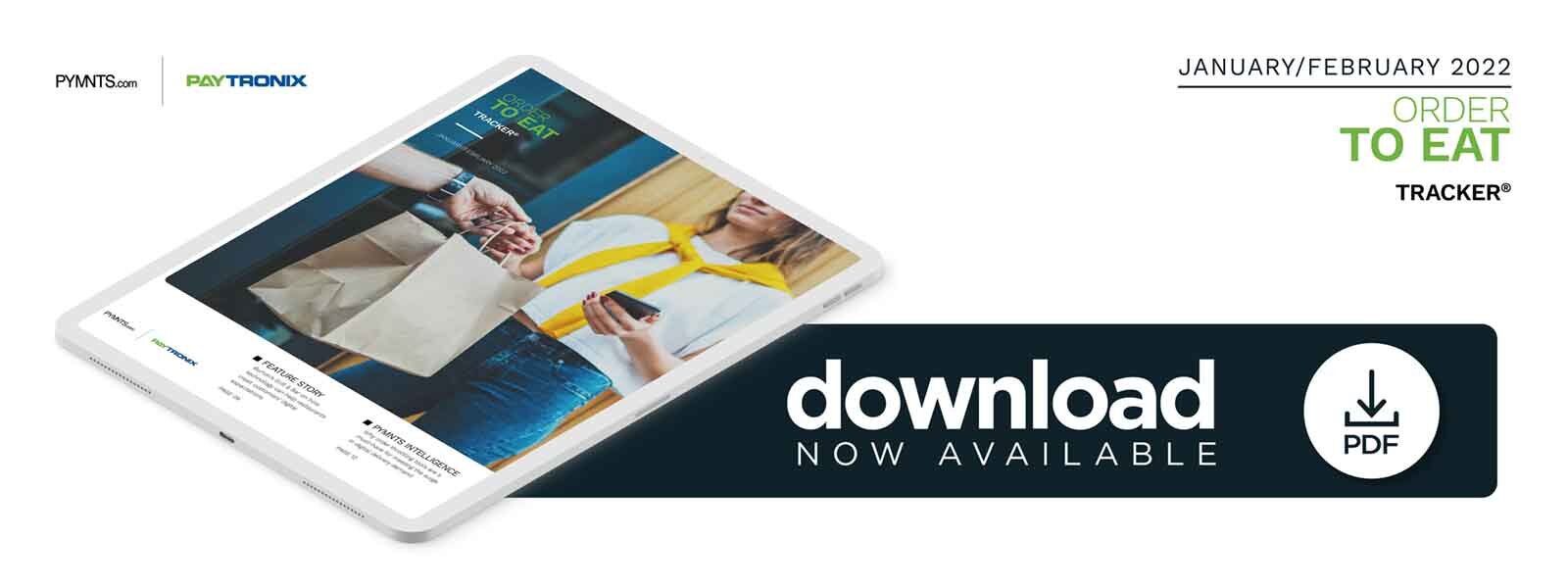PYMNTS Intelligence: How Eateries Can Tap Order Throttling Tools as Delivery Demand Grows

Consumers flocked to delivery services during the pandemic’s early days as public health guidelines drove meal ordering online. Seamless delivery services have become critical to many quick-service restaurants (QSRs) during the past two years, with global brand Starbucks going so far as to credit mobile orders with its recovery of lost revenue from 2020. The coffee chain reported that its mobile orders hit an all-time high in 2021, accounting for more than 25% of the total.
Though diners’ reliance on delivery has lessened somewhat in the past year, many remain appreciative of digital ordering’s ease and convenience. One recent study found that 2021 delivery sales remained 50% higher than 2019 figures despite an anticipated decline. Consumers who have become attached to delivery are also utilizing multiple ordering platforms and services to ensure they get the best deal, with December 2021 PYMNTS data finding that 15% of diners used at least three or more delivery aggregators in the 18 months before the study.
Offering consumers a smooth ordering and delivery experience is imperative for QSRs’ survival in this shifting space, but managing ever-expanding order volumes seamlessly and effectively is a major challenge. This month, PYMNTS examines trends and hurdles in online delivery, especially how restaurants can match growing delivery demand without straining their available resources or adding friction to the customer experience. We also explore how restaurants are tapping order throttling solutions — digital tools that curtail delivery app orders during peak times — to ease pain points and run their kitchens more smoothly.
Consumers’ Appetites Outpacing Restaurants’ Ability to Deliver
Consumers’ expanding usage of online delivery services represents a key opportunity for today’s QSRs and other eateries, many of which are fighting to attract and retain diners following more than a year of economic setbacks and customer engagement challenges. One October 2021 report found that at least 10% of U.S. restaurants — most of them independent eateries rather than large-scale chains — had folded since the beginning of the global health crisis, driving the need to provide seamless, easy customer experiences in an already fiercely competitive industry.
Providing a stellar digital ordering and delivery process is swiftly becoming essenti al for many eateries, especially as consumers begin to show a marked preference for online and mobile delivery and dining experiences. Mobile aggregation apps are one of the main tools customers are using to order their meals, and ease and convenience are the top reasons for their use, as 63% of consumers cited in a recent PYMNTS study. Another report found that 40% of consumers had used a third-party delivery service such as Grubhub or DoorDash to purchase their food.
al for many eateries, especially as consumers begin to show a marked preference for online and mobile delivery and dining experiences. Mobile aggregation apps are one of the main tools customers are using to order their meals, and ease and convenience are the top reasons for their use, as 63% of consumers cited in a recent PYMNTS study. Another report found that 40% of consumers had used a third-party delivery service such as Grubhub or DoorDash to purchase their food.
Offering customers a smooth delivery experience is becoming increasingly challenging, however. One problem is that the growth in digital ordering and delivery over the past two years has created an untenable demand for these services at many restaurants. U.S. consumers spent 14% more on restaurant and grocery orders in October 2021 than in October 2019, for example. Restaurant labor shortages are compounding the problem of juggling a multitude of orders, and many have been shutting down delivery orders during main mealtimes to reduce the strain on their kitchens. One recent study found that 15% of U.S. diners reported that delivery services were unavailable from full-service restaurants during peak times, for example. Other restaurants have revealed the need to reject 300 to 400 weekend orders from digital apps to avoid overextending their resources.
Using Order Throttling Software to Reduce Frictions
Simplifying menus for digital orders and implementing labor-saving automation are two ways restaurants try to reduce the pressure on their staff. Crucially, however, restaurants also need efficient ways to even out the volume of online delivery orders during peak periods without jeopardizing their relationships with today’s digital-first diners. Implementing order throttling tools that can stagger delivery orders at a steady, consistent rate is one-way eateries could ease staffing constraints while keeping these vital channels open and operating smoothly. Off-premises guests receive delivery times based on the real-time activities of the kitchen, eliminating unexpected delays or stoppages.
Integrating third-party tools or software that can manage orders from disparate channels without overwhelming eateries’ capacities is becoming necessary for today’s restaurants to stay in business. Eateries must adjust their online ordering capabilities and infrastructure accordingly.
